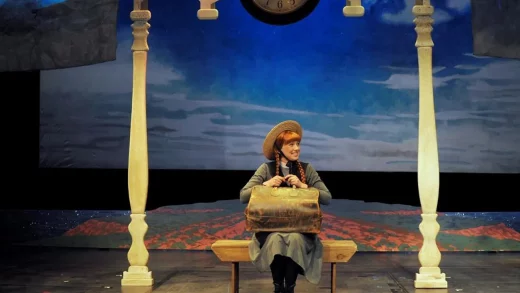:format(webp)/https://www.thestar.com/content/dam/thestar/entertainment/television/2023/05/04/shonda-rhimes-on-bridgerton-prequel-queen-charlotte-its-a-complicated-love-not-a-fairy-tale-love/_1_main_bridgerton_prequel_queen_charlotte_king_george.jpg)
“Queen Charlotte: A Bridgerton Story” is, at its most basic, about a royal white man marrying a Black woman and how that changes the kingdom. It might put you in mind of another mixed race royal couple, but Shonda Rhimes wasn’t thinking about Prince Harry and the former Meghan Markle when she wrote it.
It was actually Harry’s ancestor, Queen Victoria, who was in the back of her mind.
“She’s also a fascinating character in history,” said Rhimes. “And so I was just thinking about a young queen’s rise to power.”
Victoria became queen in 1837 at age 18 and ruled for almost 64 years, eclipsed only by her great-great-granddaughter — Harry’s grandmother — Queen Elizabeth II, who reigned for nearly 71.
Charlotte of Mecklenburg-Strelitz was 17 when she married King George III in 1761 and remained queen of England until her death in 1818.
There is a theory that Charlotte was descended from a Black branch of the Portuguese royal family, a theory that the team behind “Bridgerton” ran with in making their Queen Charlotte Black. (She is played as an older woman by Guyana-born actor Golda Rosheuvel and as a younger one by British actor India Amarteifio.)
That decision underpins a key feature of “Bridgerton,” a romance drama based on the novels of Julia Quinn about a wealthy, white family. In the Netflix series, the ton — the name for London’s high society during the early 1800s Regency era — is conspicuously populated by non-white aristocrats.
Season 1 featured Daphne Bridgerton (Phoebe Dynevor) marrying the Black Duke of Hastings (Regé-Jean Page); in Season 2 Anthony Bridgerton (Jonathan Bailey) takes a South Asian bride in Kate Sharma (Simone Ashley). “Queen Charlotte” is a prequel in which the marriage of a white king and a Black princess is portrayed as chipping away at a well-established tradition of racism.
“We had a moment in ‘Bridgerton’ where we hear why society was united; their love united society,” said Rhimes, referring to Charlotte and George who, by all accounts, really did love each other. “And this was a chance to really tell that story. You know, they don’t completely unite society, but they’re trying to make a good start in the beginning.”
In “Queen Charlotte” it’s George’s mother, Princess Augusta (played by Michelle Fairley of “Game of Thrones”), who initially decides to give people of colour a toehold in the aristocracy after seeing how “brown” Charlotte is.
“The great experiment,” she calls it.
For the first time, titles are bestowed on rich people who aren’t white, including a young Lady Danbury (Arsema Thomas), whose mature self is a fearsome presence in “Bridgerton,” and her much older husband, the new Lord Danbury (Cyril Nri).
“Queen Charlotte,” Rhimes said, allows viewers “to understand why Lady Danbury is who she is and what her relationship with the queen really is. You see them together in the ‘Bridgerton’ world, but you don’t necessarily understand how they came to be these people.”
Indeed, the youthful Agatha Danbury is the most important character in “Queen Charlotte” next to the queen. Herself a descendant of African royalty in Sierra Leone, she plays an active role in trying to keep “the great experiment” alive as white members of society oppose it.
She is also emblematic of another thread in “Queen Charlotte,” one that Rhimes said she finds fascinating: the limitations placed on women of the time period.
“These women basically get to exist because their husbands exist and that’s horrific to me,” Rhimes said.
In “Bridgerton,” by the time we meet Charlotte, Agatha and their friend Violet Bridgerton — the matriarch of her family — they have achieved some independence. “King George is not really a part of the picture. Lady Danbury is no longer married. Lady Violet’s husband has already died. So we’re seeing them without those constraints on them,” said Rhimes.
“And I really wanted to show what it was like to have those constraints placed on you and how you … rise through it.”
In rising, Charlotte and Lady Danbury uphold a proud tradition of spirited female protagonists in period dramas, but “Queen Charlotte” also digs into the emotional toll of becoming the commanding women we see in “Bridgerton” — something that makes this series feel more substantial than its predecessor.
In “Queen Charlotte,” Agatha is trapped in a loveless marriage to an aging husband to whom she was promised at age three. When he dies suddenly, she struggles not only to navigate life without a spouse but to hold onto her newly won status within the aristocracy.
Charlotte is betrothed against her will to the king of England (Corey Mylchreest) — their meet-cute happens as Charlotte tries to flee their wedding by climbing over a garden wall. But while there is love in her marriage, there is also homesickness and loneliness alongside pressure to produce an heir to the throne and, thus, secure her position and the positions of people who look like her.
And then there is the “madness” of King George, believed now to have suffered mental illness, possibly bipolar disorder. The series betrays the medical ignorance of the time with George’s treatments amounting to little more than physical torture, until Charlotte puts a stop to them.
It is said that, in real life, Charlotte remained devoted to her husband throughout his illness, a tenderness that is depicted in “Queen Charlotte.”
Although it includes some of the bodice-ripping sex scenes that viewers of “Bridgerton” have come to expect, it also shows a couple getting to know and respect each other, and it’s a stronger series for that.
“In real life, their love story was amazing,” Rhimes said. “And I really loved the idea you see in ‘Bridgerton,’ that she’s still married to King George (even though) it’s not always great. I really wanted to show how that love began and why it endured. I really want to tell a story of complicated love, not a fairy-tale love.”
JOIN THE CONVERSATION
does not endorse these opinions.
:format(webp)/https://www.thestar.com/content/dam/thestar/entertainment/television/2023/05/04/shonda-rhimes-on-bridgerton-prequel-queen-charlotte-its-a-complicated-love-not-a-fairy-tale-love/bridgerton_prequel_lady_danbury_queen_charlotte.jpg)
:format(webp)/https://www.thestar.com/content/dam/thestar/entertainment/television/2023/05/04/shonda-rhimes-on-bridgerton-prequel-queen-charlotte-its-a-complicated-love-not-a-fairy-tale-love/shonda_rhimes_bridgerton_prequel_queen_charlotte.jpg)



